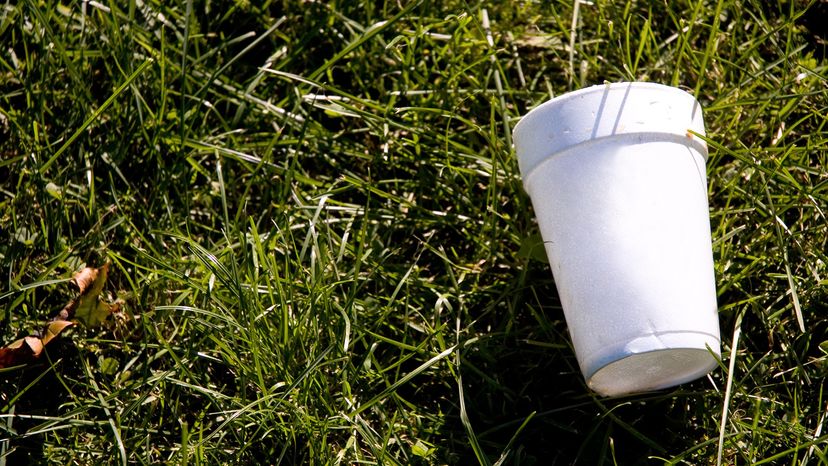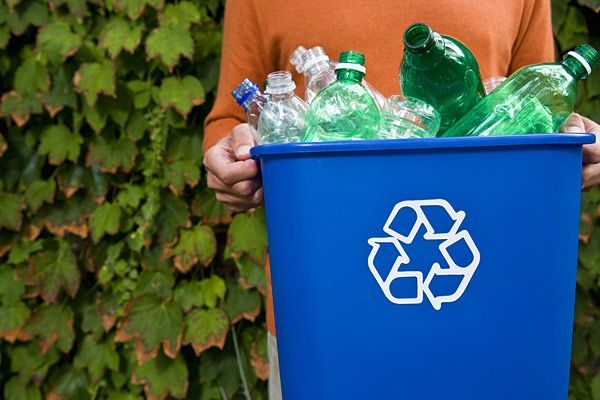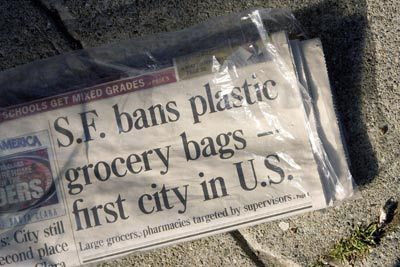The polystyrene industry claims a recycling rate of about 12 percent, according to the Alliance for Foam Packaging Recycling, but that includes scraps from EPS manufacturing, which get reused immediately.
The fact is that it's often easier and cheaper to produce new polystyrene than it is to collect, transport and process material for recycling. Since simply tossing your Styrofoam containers in the recycling bin is not helpful, here are a few options.
Reuse Your Containers
The most direct way for consumers to recycle polystyrene is to reuse it. This method doesn't work as well with coffee cups and plastic forks, but it's ideal for packaging materials.
You can collect packing peanuts and simply use them again. Shippers may take rigid packaging and chop it into small pieces to use as loose packing. UPS accepts packing peanuts from the public for reuse.
Reprocessing
Reprocessing, or the act of creating other products out of old polystyrene, can give the plastic a new life. For example, the Dart Container Corporation, the largest producer of polystyrene food containers, has four plants in the U.S. and Canada that receive EPS from schools, supermarkets, hospitals and other users.
Here's how the reprocessing works at their plants:
- The material for recycling will get shipped to the plant, where someone will inspect it to remove contaminants like paper and food.
- Sorting separates clean material from soiled waste that will need washing.
- Fed into a grinder, the waste turns into "fluff." If any EPS is not already clean, then it will undergo washing and drying.
- Heat and friction melt the fluff, removing all the air.
- The melted material is pushed under pressure into a die with small openings and extruded as strands of polystyrene, which are cooled with water and chopped into pellets.
- The company ships the pellets to manufacturers, so they can use them in everything from toys to sun visors to building insulation.
Reducing Bulk
Carrying truckloads of light, bulky polystyrene to recycling facilities is usually not economical. Recyclers have found ways to compact the material to a more manageable size. Balers take foam packaging and compress it, reducing the bulk somewhat.
Another method is to use limonene, a natural solvent made from orange peels. Limonene dissolves and concentrates EPS and can itself be reused. The chemical causes the EPS foam to "melt" without heat, reducing it to 5 percent of its original size. Thermal compaction uses heat to reduce chopped EPS to a concentrated brick that's easier to ship.
When burned in municipal incinerators, polystyrene yields nothing but carbon dioxide and water vapor. It's a good fuel for waste-to-energy programs that capture the heat and turn it into useful purposes, a process known as thermal recycling.
If recycling polystyrene sounds like a lot of trouble, what's the point of doing it? Read on to find out some reasons why.
Upcycled "Wood"
An interesting use of recycled EPS is a product that looks like wood and that builders can use for park benches and fence posts. The material costs less than hardwood and is an alternative to woods harvested from rainforests, such as mahogany and teak.
Making polystyrene requires petroleum, which is a nonrenewable resource. So recycling polystyrene reduces the amount of oil needed for the manufacturing process. This is not a pure gain, of course, because some energy will still go to transport and to reprocess the material.
The most visible benefit of polystyrene recycling is the reduction of litter both on land and in the sea. EPS — which oxygen, sunlight and water do not affect — stays around indefinitely. Municipalities have to spend money to clean it up. That's why a number of cities, including San Francisco and Seattle, have banned EPS in takeout food packaging.



